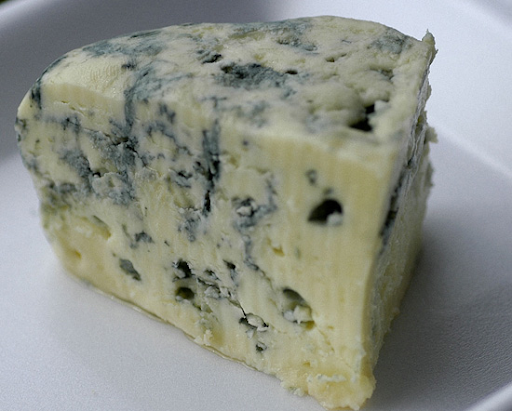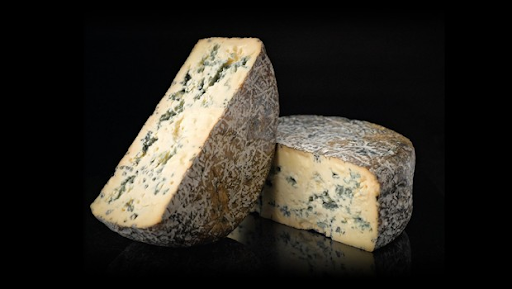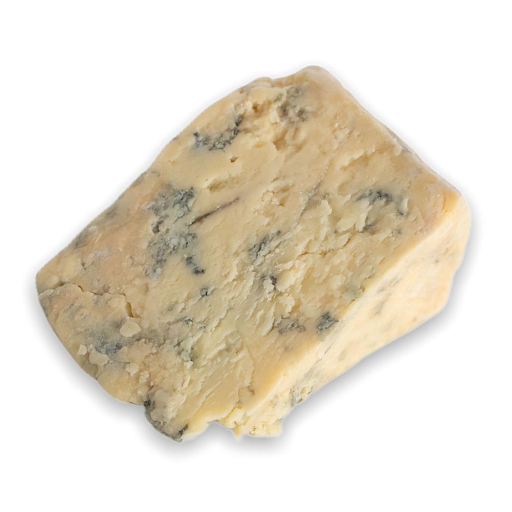The Funky World of Blue Cheese

Gorgonzola (Franco’s Brand)
Blue cheese is definitely an acquired taste. You either love it, or you hate it. This type of cheese has a stimulating flavour: It has a mature and bold taste, some might even say it tastes funky! Now that the festive season is upon us, you can incorporate blue cheese on your menu to surprise the taste buds of your guests. Dessert Advisor will walk you through its history, how it’s made and its perfect pairings. By the end of this blog, we might convert you into a blue cheese lover!
The Accidental Discovery of Blue Cheese
Based on stories, it is rumoured that blue cheese was discovered by accident around 1000 BC. How can cheese be accidentally discovered?
In the Roquefort region of France, around the many caves, a young boy left his meal (bread and sheep milk cheese) once he saw a beautiful girl from afar. Returning back to the cave after many months, the mold (penicillium roqueforti) found in the cave turned his cheese into what we now call Roquefort cheese. This was the first type of blue cheese discovered.
Others believe that a shepherd left his cheese at the same cave, after being instructed by an angel to do so. Months later, he discovered that the cheese became ravaged by penicillium roqueforti, a mold originating from the cave.
These days, you can find various types of blue cheese. France and Italy introduced the earliest versions, and have evolved all through Europe and North America. The many varieties of blue cheese will have different textures and flavours. It can range from a crumbly texture with a salty taste, to a creamier cheese with an earthy aroma.

Bleu d’Élizabeth (Fromagerie du Presbytère)
Blue Cheese: How is it Made?
In modern days, we no longer have to rely on a cave to create blue cheese. These days, cheesemakers use pasteurized raw milk. Acidification of the pasteurized milk takes place once a starter culture is combined, transforming lactose to lactic acid. This results in liquid milk being converted into a solid block. Cheese curds are formed by adding rennet to coagulate (i.e., make it solid) the milk. At this phase, penicillium roqueforti is scattered all over the cheese. Afterwards, the cheese is aged over a span of 60 to 90 days. To prevent spoilage, the cheese is sprinkled with salt. By piercing holes, the cheese takes on its blue appearance as oxygen reaches the inside of the cheese. The mature and bold flavour intensifies the longer the cheese is aged.
Blue Cheese Health Benefits
Not only is it full of flavours, consuming blue cheese provides many health benefits. This specific cheese has anti-inflammatory properties, boosts the immune system and reduces the risk of getting cardiovascular disease. The high presence of calcium also helps maintain good dental hygiene. If you’re not a fan of the taste, maybe these health benefits will convince you to add blue cheese to your diet!

King James Blue Stilton (Charlottetown Cheese Company)
Perfect Pairings for Blue Cheese
If your palette is not accustomed to the savoury, yet funky aroma, we will mention foods that are a perfect pairing for blue cheese. It is important to taste the cheese before picking out the flavour of the accompanied foods. This is because it will determine which flavours compliment the blue cheese. For example:
- Pears: This is the most popular pairing! The sweet flavours of the pears perfectly compliments the bold aromas of blue cheese. A pear’s crispy texture coupled with the soft and creamy cheese will surely create fireworks in your tastebuds.
- Figs: Just like pears, figs have a sweet and berry-like taste. The combination of salty and honeyed flavours bursts in your mouth after every bite. This pairing will be a hit at any gatherings!
- Mushrooms: For a more earthy and umami flavour, mushrooms and blue cheese are a match made in heaven! These days, adding blue cheese to your burgers and baked potatoes are a new foodie favourite. Try it now and explore the taste!
- Wine: Of course, no cheese pairing guide is complete without mentioning wines. On the sweeter side, certain types of fortified wines, such as porto, sherry and pineau des Charentes make fantastic pairings. While stronger in alcohol content, they have a sweet taste that works well with the pungency of the cheese. If you prefer red wines, malbec and cabernet sauvignon are your best bets. Their medium to full-bodied taste pairs great with strong blue cheeses. Finally, you might be surprised that white wines can also make a good pairing. Consider sauternes, a sweet and fruity dessert wine, and even sparkling wine, which marry well with the lighter blue cheeses.
Now that you learned more about this special cheese, we hope that we stimulated your tastebuds! Don’t be afraid to add this mature and bold cheese in your everyday palette. Check out for blue cheese options today!




